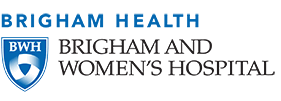Brigham Health: Brigham & Women’s Hospital

The Brigham and Women’s Hospital (BWH) is a 793-bed, trauma level one, academic medical center located in Boston, MA which serves a diverse patient population. BWH has prioritized patient- and family-centered care as its primary strategic goal for the last several years.
BWH has three PFACs specifically for ambulatory care that are chaired by their respective medical directors. The Phyllis Jen Center is the largest primary care practice at BWH and serves a diverse cultural and socioeconomic patient population. The Jen Center PFAC was established in 2014 and is comprised of nine patient family/advisors who have worked on improving patient-facing materials, for example: creating a patient practice agreement, editing the patient newsletter for patients in the practice, and providing feedback on letters to patients informing them of new practice policies.
The Fish Center PFAC was established in 2015 and has ten patient/family advisors. This practice located in Chestnut Hill, MA is a multispecialty practice comprised of primary care along with specialty care (e.g., dermatology, gynecology, and rheumatology). The council has spent its first year working on improving the patient flow process from check-in to check-out and also on improving communication about notifying patients that their care provider is retiring.
South Huntington Medical Home is a multidisciplinary primary care practice that includes a pharmacist, nutritionist, and social workers. The South Huntington PFAC was established in 2013 and has five patient/ family advisors. Dr. Stuart Pollack, Medical Director, believes in partnering with advisors and states, “As a physician, it is almost impossible for me to think like a patient. When I’m sick, I email my doctor directly, and when we are together in the exam room, we are speaking doctor, not English.” The council has worked on improving the overall patient experience – from revamping the patient practice compact to revising the phone tree to strengthening communication between staff, providers, and patients.